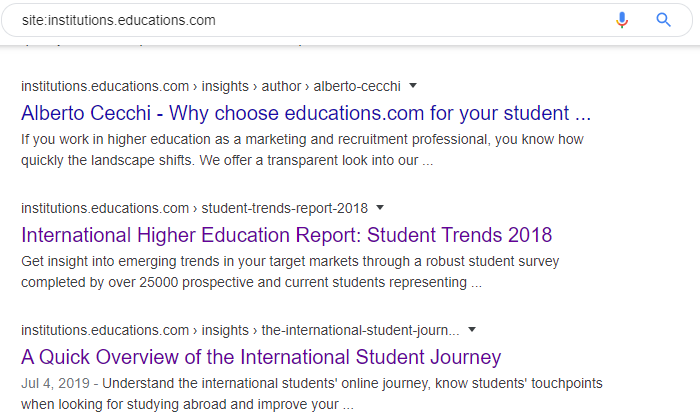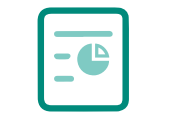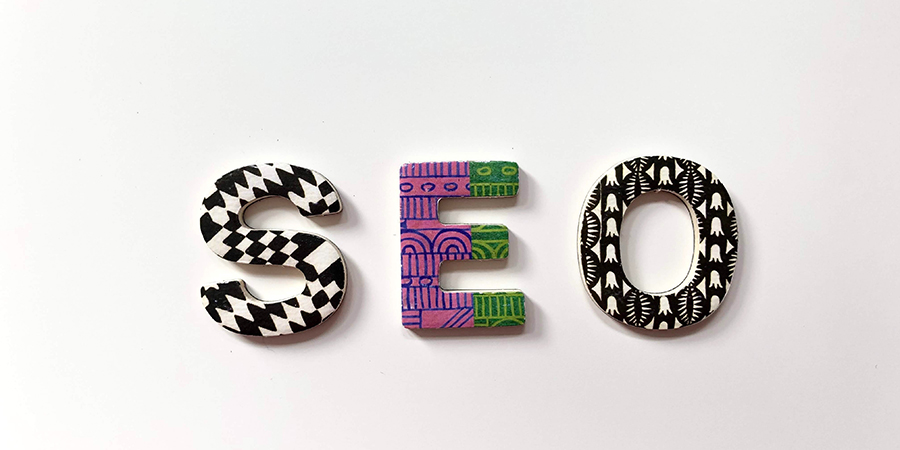Your website has a good interface and informative content, but unfortunately this might not be enough to put your site on the map. The first step is to make sure your website is visible to users and optimized for search engines.
Every day, over 55 million searches are performed on Google. In order for your institution to be successful, the rule is simple: The higher your page ranks, the better. This is where SEO comes in.
Here are 7 easy SEO-tips that you can use to increase traffic to your home site.
- Index your page
- Do Keyword research
- Add alt-text to images
- One topic at a time
- Mind the code
- Optimize, don't copy
- Understand the user's search intent
What is SEO?
Search engine optimization, or SEO, is a collection of methods used in order to improve the ranking of your page. The end goal is to have your page be the first one users see when they perform a search.
Search engines like Google try to search the web and deliver the best and most relevant results. This means that the moment someone searches for "knitting courses" or "studying abroad," the search engine tries to give them the most relevant content for the topic.
Through optimizing your site and its content, you’re giving the search engines a clear overview of what your site is about and how relevant it is compared to your competitors.
Benefits of SEO are numerous: You'll be visible to your target audience, earn credibility as an authoritative site, and improve your organic traffic and turn visitors into customers.
To be visible to search engines is one thing, but to rank in the top of search engine results is another. Here's how to put your page on top:
1. Index your page
Google is the main search engine in the world, so it’s important to index your site so Google can find it in the first place. It does so with programs that discover and scan websites - this is known as crawling.
After your website has been crawled it will be archived, or indexed, so that when a search is performed it can be pulled from the archive and presented as a search result.
The process of making your site more visible is pretty straightforward.
You should start with:
-
Use a simple and logical URL structure
-
Make sure to link internally so Google crawlers can follow a straight and logical path through the content of your page.
You can check how many pages on your site are indexed by running it through Google.
Typing “site:YOURDOMAIN.com” you can see all your google results. If anything is missing that should be indexed, Google search console is the place to start.

2. Do keyword research
Finally, do your research and find the keywords you wish to rank for. Keywords are possibly the most well-known aspect of SEO. In order to utilize keywords properly:
Don’t go overboard with keywords:
"We help you get the best strategies higher education. Higher education strategies will help you do marketing in higher education strategically."
That did not sound natural, did it?
Keywords stuffing worked when SEO was a new discipline and it helped a lot of spam sites rank high quickly. However, Google has gotten smarter since then and doing this can definitely get your site penalized. Use keywords naturally, utilize so-called long tail keywords, synonyms and questions such as:
“What marketing tactics are critical in today’s higher education recruitment”
Doing keyword research requires the right tools: MOZ offers free SEO tools including a keyword explorer that you can use for free.
3. Add alt-text to images
A picture might say more than thousand words but Google cannot see pictures. Instead, you need to use alt-text to describe them.
Text added to the pictures is called alt-text and helps both search engines and visually impaired users understand what your picture is about.
-
keep your alt-text up to 125 characters
-
feel free to include the keywords you’re trying to rank
Example:
For example, if your article is trying to rank for "how to generate leads," you can include "lead generation" in your alt text.

Bad alt text: "A woman showing a graph"
Good alt text: "Marketing specialist using graphs to explain lead generation to a customer"
4. One topic at a time
The easiest way to have visitors bounce right off your site is to have a disorganized structure.
An organized site helps both users and search engines. An easy way to utilize this is through the SEO tactic called topic clusters.
Topic clusters group content that covers a certain topic together, in turn, this content links back to a central pillar page that should broadly outline the topic you wish to rank for.
For example at institutions.educations.com our broad focus is on higher education marketing. This topic is fragmented further into subcategories (tags) such as student recruitment trends, lead generation for higher education, international student recruitment insights.
This helps the users understand what the website is about and how it might be of help to them. From an SEO perspective we are sending a clear message that there is a semantic relationship between the content and the website.
5. Mind the code
The source code makes the crawling easier and while some of it might be complicated, the things you need to optimize are pretty simple.
Follow the steps below to open, read and optimize your source code:
-
Click CTRL+U to view the source code
-
See if the title is clear: The title tag is the most important element of your page
It should be between title tags:

Your title tag will influence what Google decides to show on the search engine results:

-
Write a compelling meta description
A meta description tells what your page is about. There is only one meta description and it looks like this in the source code:
<meta name="description" content="Are you looking for solutions to help you boost your international student recruitment? Learn about how educations.com can help!">
The meta description will not influence your ranking directly but if done right it will compel users to click on your page.
-
Have one H1 element
The H1 tag is the main heading on a page. Keep it inviting and engaging. It should prompt people to read the rest of your content.
-
Have a clean URL
The URL is one of the most important elements for SEO. In order to optimize your URL for SEO remember to:
- Describe your content
- Use the keywords you wish to rank for in URL
- Keep your URL short
6. Optimize, don't copy
The content on your page should be informative and unique. This does not mean you have to think about making every piece unique. The web is full of content written on the topic you are trying to write and rank for.
Copying might not result in a direct penalty from Google but having multiple versions of the same content can impact the overall visibility of your page. Google only lets the originally created content rank.

 A search engine will rarely show all the copies of the same content
A search engine will rarely show all the copies of the same content
Instead, it's forced to decide which is one is likely to be the best result.
7. Understand the user's search intent
Finally, keep in mind the intent behind the search! Understanding this will help you write and promote your content the right way.
Are they curious about fun facts in history or do they want to study history abroad? This combined with your keyword research is the foundation of your content planning.
In summary:
Go back to the beginning of your page and skim through. Does it have images, videos, or short snippets of text? If not, make sure to fix it. Your users will be far more interested in content that is not a wall of text. Additionally, using bullet points and lists can land your page as a featured snippet on SERP.





%20-%202.png)

